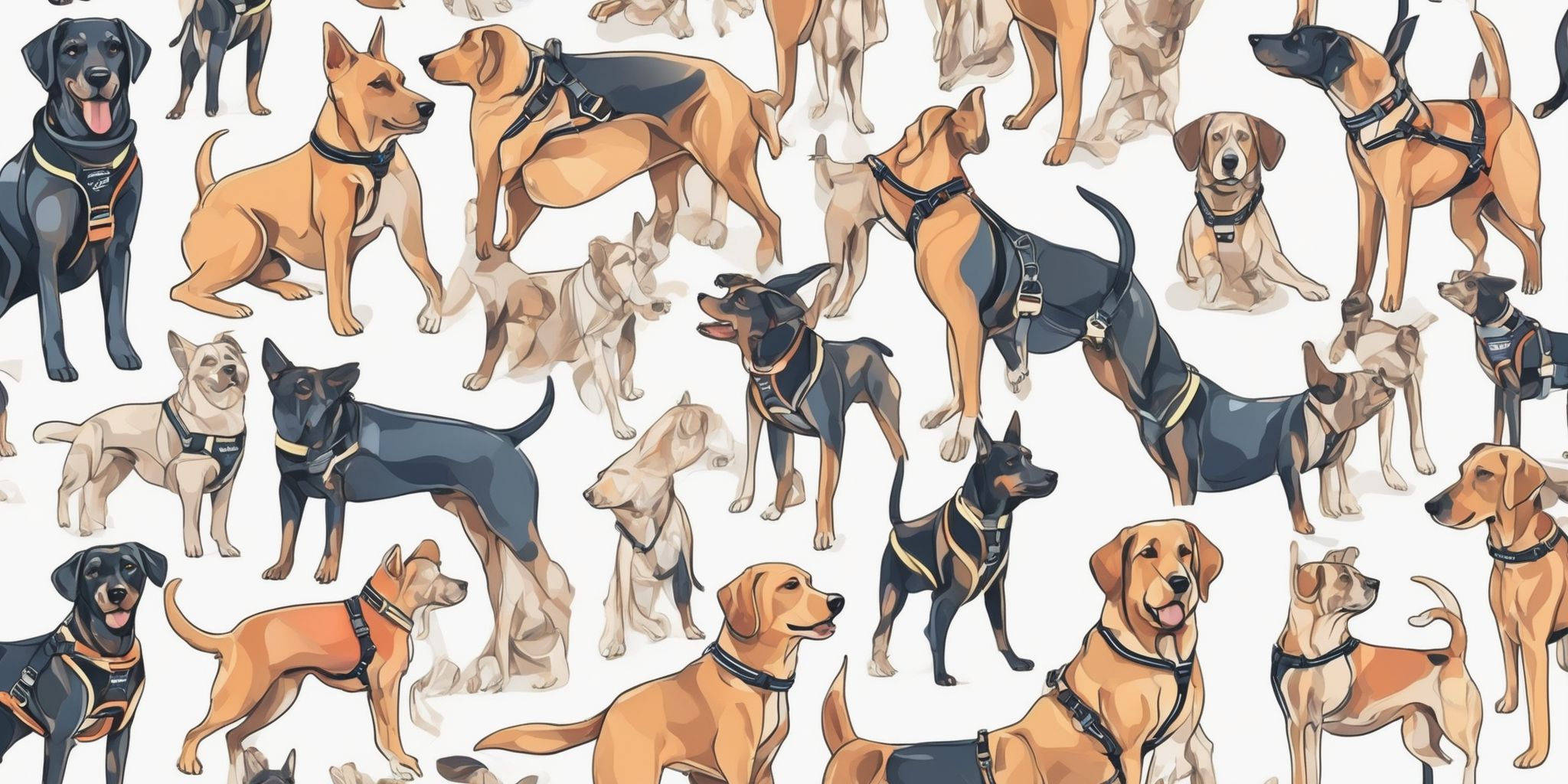For both established dog owners and novice pet parents, identifying the suitable harness for your dog can be a task that needs thoughtful attention. A multitude of options can make the process seem formidable. Nevertheless, choosing an apt dog harness is imperative for your dog’s comfort and safety during outdoor activities. This piece will guide you through various factors to make an informed and effective choice for your furry friend.
Benefits of Using a Dog Harness
Dog harnesses offer various advantages for dogs and their human companions. They provide better control of dogs during outdoor activities and training sessions, helping owners steer their pets from potential hazards. Moreover, they ensure equal distribution of pulling pressure, reducing strain on the throat and neck, a benefit especially for dogs with respiratory issues or breeds susceptible to neck injuries.
Certain harnesses also have extra features like reflective stripes or handles for better grip, ensuring safer nocturnal walks or emergencies.
Factors to Consider When Choosing a Dog Harness
A few key aspects must be considered while selecting a dog harness.
Firstly, the harness's fit is vital for your dog's comfort and safety. Straps that can be readily adjusted to your dog's size facilitate an optimal fit. Also, the material used in the harness should be durable, like nylon or leather, ensuring longevity. Furthermore, check for a user-friendly design that facilitates easy application and removal. Lastly, added features like reflective strips or handle attachments can enhance visibility and provide extra control when needed.
Types of Dog Harnesses
Front-clip Harness
Highly favored among dog owners, front-clip harnesses are known for their efficacy in managing the dog during walks. Contrary to traditional harnesses that clip on the back, these harnesses have the attachment point on the chest. This helps dissuade pulling and promotes better walking habits. They are particularly beneficial for dogs that tend to pull or lunge excessively. Trainers and behaviorists often recommend these as a tool to foster good leash-walking attitudes.
They can also prove useful for dogs with respiratory problems due to reduced pressure on the neck.
Back-clip Harness
In back-clip harnesses, the leash attaches to the dog's back. The design gives greater control over the dog's movements during walks, as the leash attachment is closer to the center of gravity. It discourages lead pulling since the pressure is directed towards the dog's chest rather than the neck. It can be advantageous for dogs prone to respiratory issues or tracheal damage as the tension from the leash is spread across the dog's body, thus reducing strain on the neck and throat.
No-pull Harness
Designed to discourage dogs from pulling on the leash, a no-pull harness spreads the force across the dog's body, making walks more enjoyable. It provides better control over the dog's movement, making it easy to redirect their attention during walks. It significantly eases the strain on the owner's arms and shoulders, promoting better leash behavior.
Adjusting and Putting on a Dog Harness
Measuring and Choosing the Right Size
Choosing the correct size harness for your dog is paramount for their comfort and safety. Proper measurements ensure easy movement and prevent any discomfort. The dog's chest girth just behind the front legs can be accurately measured with a soft tape. While choosing a size, take into account both the weight and breed of your dog. Proper assessment of these factors can help you find the perfect fit for your pet.
Proper Adjustments for Comfort
Correct adjustment of a dog harness contributes to optimum comfort. Securely fitted straps ensure that the harness fits snugly and securely, reducing rubbing. The harness should neither be too loose nor too tight. Right adjustments prevent unnecessary pressure on the chest or neck, allowing your dog to breathe comfortably.
Step-by-Step Guide to Putting on a Dog Harness
Place the harness flat on the ground and ensure the straps are untangled. Put it over your dog's head, positioning the D-ring on their back. Insert your dog's legs into the right openings and adjust the straps for a snug fit. Secure the buckles in place and double-check the snugness of the harness. Following these steps, you'll have your dog comfortably harnessed and ready to go in no time.
In Conclusion
Selecting the appropriate dog harness for your canine friend involves thoughtful judgment. A dog harness is a valuable tool for managing your dog's behavior outdoors. Consider factors such as the dog's size, breed, specific needs, harness usage, durability, and comfort. Undertaking thorough research can significantly enhance your dog's safety, comfort, and well-being.






